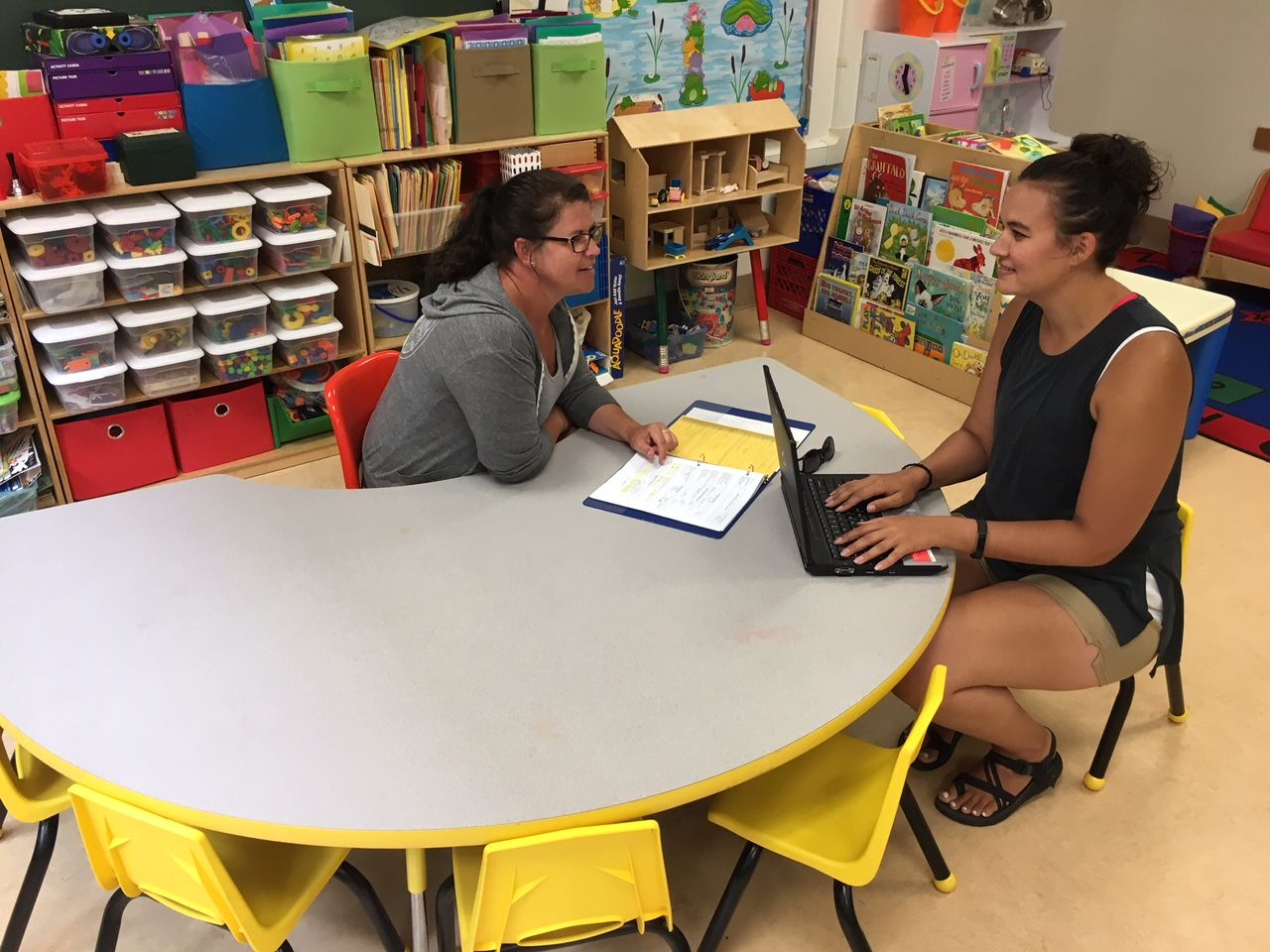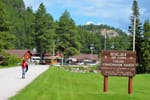South Dakota no longer has the lowest-paid teachers in the nation, but education officials caution that lawmakers must maintain an aggressive approach to funding if that status is to continue.
According to 2018 rankings and estimates by the National Education Association, South Dakota had the highest percentage increase in average teacher salaries between 2015 and 2017, propelling the state from 51st in the country to 48th. That jump was funded by a half-cent sales tax, enacted by the Legislature in 2016, that was dedicated to enhancing teacher pay.
While South Dakota’s average teacher salary rose from $42,025 to $46,979 during the two-year period, pushing it ahead of West Virginia, Oklahoma and Mississippi, on average the state’s teachers are still compensated well below those in surrounding states, according to the NEA. Minnesota ranked 20th with an average salary of $57,346; North Dakota ranked 27th, and Nebraska came in 30th, the NEA report stated.
School district administrators say the salary hikes have helped ease some shortages they were experiencing. But finding teachers for certain subjects remains a challenge and smaller districts still wrestle with hard-to-fill openings.
“If I had a crystal ball it would show progress, but there are challenges remaining,” said Mary McCorkle, a 34-year former classroom teacher who has served as president of the South Dakota Education Association for the past four years. “The half-cent sales tax moved us from 51st to 48th and that’s a significant increase. Is it where we stop? No.”
The question of how the state can maintain momentum and further increase salaries is being studied by the Teacher Compensation Review Board set up by the Legislature.
Whether legislators can find additional state monies to further amp up teacher salaries remains to be seen, and further sales tax increases may be unpalatable to lawmakers who must answer to their constituents.
McCorkle said her organization had been meeting with the Teacher Compensation Review Board as recently as mid-June, to analyze data and eventually make recommendations to the next legislative session regarding school funding.
“We’ll make recommendations to the Legislature and the new governor to see if we hold the course or if we need to make tweaks or whatever we need to do to remain competitive,” she said. “Three years in, we’re not done. We have to continue to focus on education in South Dakota and ensure that our schools have the resources they need and can hire teachers for the students of this state.”

Higher pay has meant fewer openings
The Associated School Boards of South Dakota, a nonprofit organization representing more than 850 local school board members, the school districts they govern and the students they serve, maintains a listing of all teacher vacancies statewide. Since South Dakota raised teacher pay two years ago, those listings have dwindled.
“As of May, we were much lower in terms of the number of postings compared with two years ago,” said ASBSD Executive Director Wade Pogany. “I conclude that the teacher pay hike has lessened the number of openings because we are retaining more teachers now.
“The early data suggests some retention of teachers, particularly those eligible for retirement, have stayed,” he added. “We don’t know for how long, but we think it slowed the retirement process a little bit.”
Pogany credits the governor and Legislature for implementing the new half-cent sales tax, the state’s first increase since 1969, and dedicating its proceeds to improve teacher pay. But, he’s quick to note that South Dakota still has work to do to remain competitive in the future.
“For them to say, in a conservative state like ours, that there is a teacher salary problem, and we’ll institute a tax to increase salaries, was big,” he said. “You never want to diminish that and say it wasn’t enough. But, we need to keep moving the needle to become competitive. We raised the boat, but we’re still last in the region.”
Despite the increase in teacher pay, Pogany said many school districts in the state continue to battle funding challenges.
“The rural nature of the state and small schools, many with declining enrollment, means there are a lot of pressures when those factors are in place” he said. “They’re struggling. Unless you have more kids, you scramble to get as many tax dollars as you can

State perspective
Tony Venhuizen, chief of staff to Gov. Dennis Daugaard, was intimately involved with the Governor’s Blue Ribbon Task Force on Education, a group that examined the salary issue and recommended increases. He remains involved with the 22-member review board and said he recognizes that South Dakota must maintain its momentum when it comes to school funding.
“There’s no doubt that pay increases have significantly changed our ability to attract teachers, but there is always progress to be made,” Venhuizen said. “Our teacher workforce is in much better shape than it was three years ago, in terms of what we project for vacancies and new teachers coming in. I think it’s clear that the salary increase has improved that area.
“South Dakota has been in last place in teacher pay for more than 30 years,” he added. “The last time we weren’t in last place was 1985. To some, 48th might sound low, but when you’ve been in dead last for more than three decades it’s nice to be headed in the right direction.”
Venhuizen and McCorkle agree that many rural school districts in South Dakota continue to have difficulty attracting teachers, particularly in the studies of mathematics and science. Some of those rural districts have even boosted teacher pay beyond the average increase of 11.8 percent to make those jobs more attractive, they noted.
“Anecdotally it’s better, but some areas such as special education, mathematics and languages arts — specialized areas — have greater challenges in attracting teachers,” McCorkle said. “It depends on where the school district is. Not everyone wants to be in a small community and some districts have an easier time attracting applicants versus more rural districts.”
McCorkle also said a trend toward fewer retirements combined with increased number of graduates in education from South Dakota universities also had reduced widespread teacher shortages that were compounded by low pay.
Venhuizen said that he believed the state’s commitment to improving teacher pay was critical on two fronts.
“The first was simple economics — supply and demand,” he explained. “If we wanted to increase demand, we had to raise salaries. It’s a free market. The second was psychological. It was important for South Dakota to send the message that we value education, and we value teaching as a profession.”
"Realizing that the pay gap was significant, increases in average teacher salaries meant that we were able to bring some energy to the teachers and to the profession. We're now better able to compete with surrounding states for teachers." Brad Berens, Superintendent, West Central School District
From the front lines
By and large, school district superintendents throughout South Dakota – those charged with filling teacher vacancies — applaud Gov. Daugaard and state legislators for directly addressing teacher pay which they say has eased shortages and made their districts more attractive to applicants.
“It was an important step,” said West Central Superintendent Brad Berens. “Not a final step, but an important step.”
Berens, who formerly served as assistant superintendent for Rapid City Public Schools before moving to Hartford a year ago, said his district now has a “nice pool of candidates” for its open teaching positions.
“Realizing that the pay gap was significant, increases in average teacher salaries meant that we were able to bring some energy to the teachers and to the profession,” he said. “We’re now able to better compete with surrounding states for teachers.”
With 2,400 students and one of the fastest growing communities in the state, Spearfish Superintendent Kirk Easton agreed with Beren’s assessment. He said the beauty of the Black Hills had always helped western South Dakota schools attract teachers and new residents.
“We have been very fortunate in Spearfish the two years I have been here,” said Easton, who previously worked for school districts in Lennox and Warner. “I would say a lot of folks want to teach and live in the Black Hills. We’re also fortunate with Black Hills State University right here in the community, which means we tend to get a lot of applicants. We get 60 to 70 applicants for an elementary position, where in Warner we might have gotten 20. We have a huge pool to select from.”
Easton also noted that enrollment had jumped 90 students in his first year at Spearfish, and increased another 77 students last year, resulting in bolstered aid under the state funding formula.
Meanwhile, Lead-Deadwood Superintendent Dan Leikvold, who oversees one of a handful of school districts in South Dakota not included in the state funding formula because local property tax revenues exceed the perceived need as defined by the state, said across-the-board teacher pay increases had made other districts more competitive with his district.
“When the new funding formula took place, we were in the top 10 in virtually every category for teacher pay, including new teachers, master’s degrees and other categories,” Leikvold said. “We gave the smallest teacher pay raise in South Dakota the first year the new funding formula went into place and Sturgis and Spearfish went past us like they were Mario Andretti. The following year we gave a 5 percent raise and it was largest pay raise for teachers in the state.”
Lead-Deadwood currently pays new teachers a base salary of $40,000 and the district’s average teacher makes about $49,000 per year, Leikvold said. Even with increased competition from other districts that are now paying teachers more, the Northern Hills superintendent said Lead-Deadwood continues to receive ample applications for all of its teacher vacancies.
“I hear all the anecdotes of teacher shortages in STEM areas and rural areas, but with the combination of high pay and our proximity to Black Hills State, as well as the draw of the Black Hills of South Dakota, we’re always able to attract quality applicants,” Leikvold said.
Rural challenges
Tucked in the ponderosa pines of the southern Black Hills sits South Dakota’s smallest public school district, Elk Mountain. With just 14 students, three teachers, a paraprofessional and a solitary school located a couple of miles east of the Wyoming state line, district officials know the challenges of attracting qualified teachers to a rural setting.
“It’s definitely a unique situation,” said Superintendent Lisa Richardson, who also serves as a teacher to a small cast of students ranging from preschoolers to eighth graders. “We are so small and it’s very difficult to attract teachers who can fit into this unique setting.”
Beyond the pay, which averages $43,000 per year, prospective teachers struggle with the school’s small class-size and the fact the district offers no health insurance, Richardson said. Most importantly, she said it’s critical that any applicant have the ability to teach multiple grades and blend with existing staff.
“It’s hard to attract long-term teachers because we’re out here in the country,” Richardson explained. “We use our own vehicles for field trips and, because we’re such a small staff, everybody really has to get along.”
Despite its rural location, no cell phone service and a landline that is occasionally not working, Richardson said there are advantages to attending Elk Mountain School.
“The other teachers and I make less than other teachers, but for me it’s about the ability to individualize studies for each student,” she said. Each of our students has an individualized learning plan and every member of our staff builds a relationship with every child. The neat thing, from my experience, is the close relationship the staff has with not only the students, but the families and the school board. We are all in this together and you don’t see that everywhere.”




